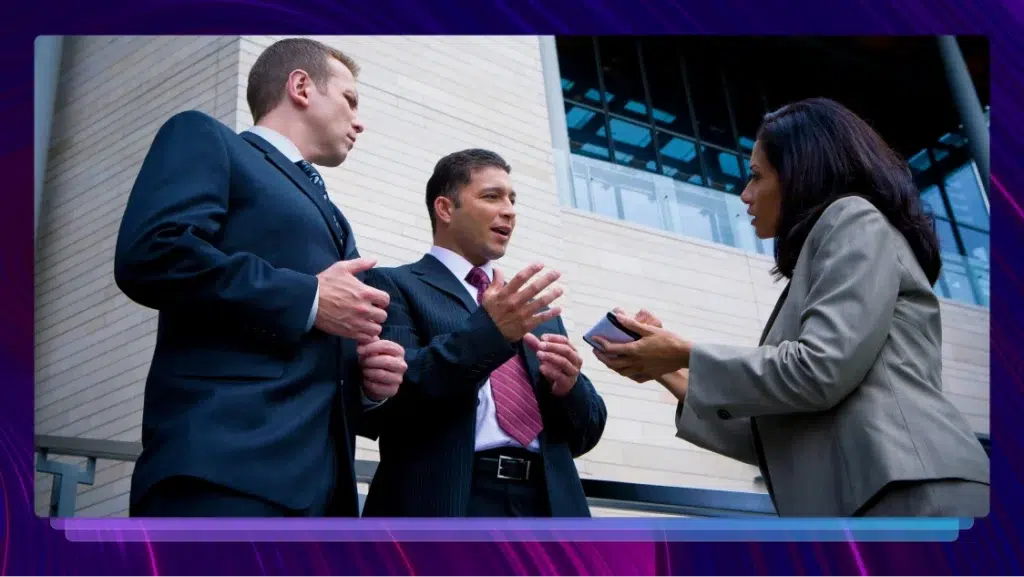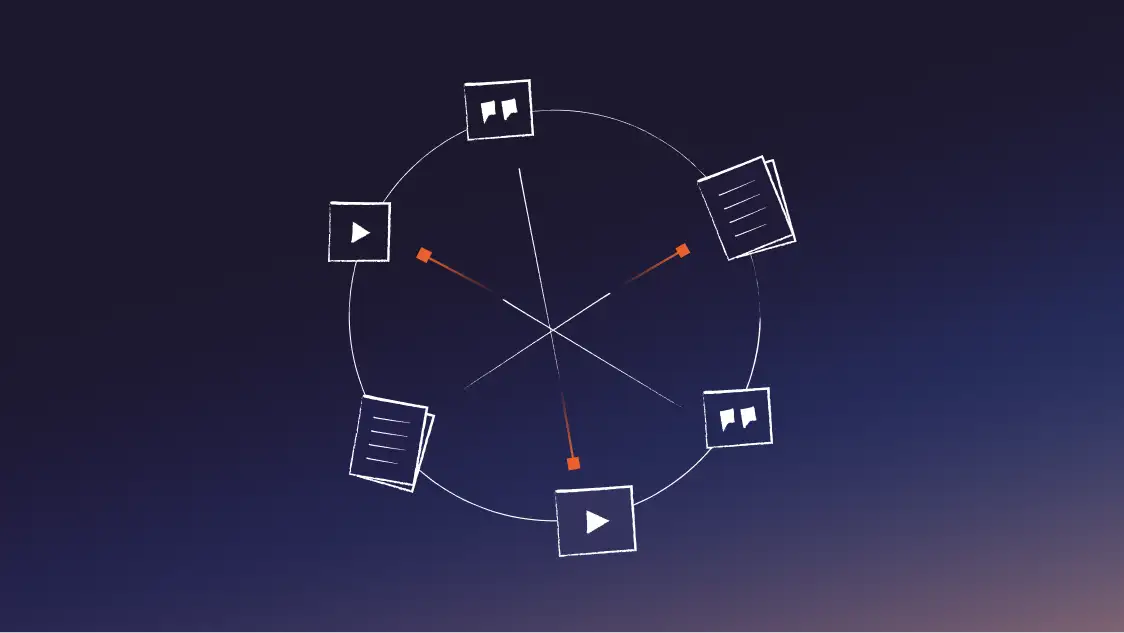AI Court Reporting + the Future of Legal Transcription
See how AI is revolutionizing court reporting. Learn how artificial intelligence enhances accuracy, speed, and legal transcription efficiency.

AI transcription is not a new concept, but it can be a mysterious and controversial one. We at Rev have offered AI transcription for court and legal projects since 2017, so we’re quite invested in the future of how AI court reporting can aid humans and the justice system.
But what does that future look like for AI transcription in courtroom proceedings and for the humans who might do the same job? Join us as we look into how AI court reporting is currently used and where digital reporting might go in the near future.
How AI Is Used in the Legal Industry
Currently, AI transcription is used in the courtroom as an additional tool to retain the record of the proceedings and create a correct transcript. This help is crucial as the U.S. Bureau of Labor Statistics estimates there could be nearly 20,000 open court reporting jobs over the next decade. If these jobs aren’t filled, the American justice system (and those who might use it, read: most of us) could face difficulties.
However, AI court reporting and AI legal transcription have made the growing shortage of court reporters a little easier for the industry to handle, since existing court note-takers can theoretically do more work with AI assistance. AI in the courtroom hasn’t replaced any human jobs, but it has made their jobs easier and more efficient in many ways that we’ll detail below.
AI for Court Reporting
A court reporter is traditionally an onsite human stenographer. They’ve been onsite by necessity, because a court reporter does so much more than robotically taking down spoken words. A live courtroom can be an emotional place and nuance is important for a court note taker to, er, note. That said, the aforementioned shortage of court reporters has created an evolution in the job; namely, court reporting is now often done remotely or using recorded audio.
"In many cases, it’s possible to use a remote court reporter, making scheduling and availability more convenient, and removing considerations like travel and transporting equipment," explains Matt Riley, Executive Director at AAERT. "Whether remote or in-person, a certified court reporter will deliver an accurate transcript quickly and efficiently, which is an indispensable part of the deposition process."
Here’s where AI in the courtroom can become increasingly common. As AI gets more advanced and can detect nuance in human speech, it’s more feasible and practical than ever before for AI transcription to work nearly the same way as remote stenographers do (if not more efficiently). Live human transcription of courtroom testimony can take days to turn around, whereas AI transcription can be completed in mere hours. All you need to do is upload your audio or video file and an Automated Speech Recognition service does the rest.
The drawback of AI court reporting, at least for now, is that AI isn’t foolproof. Legal transcription needs to be as accurate as possible, so attorneys using AI transcription should require a human legal proofreader to ensure utmost accuracy.
AI for Bulk Legal Transcription
AI legal transcription can be useful wherever a stenographer isn’t required or available. Simply put, there are reams of legal transcriptions needed every day. Hearings, depositions, and even interrogations can take place over hours, if not days.
Human transcription of these legal events can take as long if not longer than the event itself. In some cases, a lawyer will do their own transcription, but that’s inefficient at best. Using a legal transcriptionist is ideal but not always possible, and saps an already dwindling resource.
AI legal transcription can generate drafts of everything from depositions to voice memos almost immediately, freeing up a human legal transcriptionist to work elsewhere. Learn more about stenographers vs. transcriptionists on our blog.
AI for Legal Translation
For legal firms with global clientele or bilingual clients, translation is an important but time-consuming task. Accuracy in translation is as important — if not more so — than legal transcription because of the nuance and differences between languages.
Language barriers, differences in laws and regulations from country to country, and just the huge amount of one-to-one language translations that are possible make legal translation a job that can require vast resources. There’s not always someone available who can translate into, say, Portuguese.
AI can make translation hurdles in the legal world a thing of the past. It’s important to note that for liability issues a human expert should always oversee any AI-generated translation of legal documents, but “overseeing” and “generating from scratch” are vastly different time commitments.
Benefits of AI Court Reporting
The most obvious benefit of AI court reporting is that AI can do the work much faster.
Days of transcription and translation time can be turned around almost immediately and (usually) at a much lower cost. AI can save a firm time and money, but it’s also an efficient tool to assist the justice system during the ever-increasing stenographer shortage.
AI in the courtroom is:
- Cost-effective: AI is generally a great deal cheaper than an hourly employee or freelance service.
- Fast: What could take a human transcriptionist days to complete can now be turned around in minutes.
- Accurate: AI transcription gets more accurate all the time. Rev’s AI legal services, for instance, are 90% accurate.
- Constant: AI works 24/7, so if a lawyer is pulling an all-nighter they could conceivably get what they need now, as opposed to waiting for regular business hours.
Potential Concerns With AI in the Courtroom
There will always be certain ethical concerns when AI is involved in an industry, and the legal world is a heightened example of this. Accuracy is a major concern when it comes to legal transcription because so much — from liability to a person’s actual freedom — rides on it. The ethical concerns have become actual legal concerns, as more than 20 federal judges have issued standing orders against the use of AI in the courtroom, according to Bloomberg Law News.
Some courts are proposing requirements that force attorneys to verify any information touched by AI. As far as legal transcription and court reporting go, that’s a best practice that we recommend anyway. Since AI technology (so far) simply isn’t quite as accurate as a human, it’s just good sense to “check the work” produced by AI. Doing so can a) ensure accuracy and b) potentially shield yourself against liability.
Other potential concerns with AI in the courtroom:
- Security: To prevent data breaches, we recommend that any AI transcription service you use adheres to strict HIPAA compliance standards and some form of file encryption.
- Job security: In any industry where AI usage is increasingly more frequent, the “replacement” of human jobs is a genuine worry. We’ll address this later in the post, but we don’t see this being a serious problem in court reporting.
- Interpretation: AI, while getting more accurate every day, often has trouble transcribing certain words of vocal tics, leaving transcriptions somewhat inaccurate if they haven’t been edited by a human.
Differences in Legal Roles
“Court reporter” is a term that encompasses several different jobs. The traditional idea of a court reporter is the person who sits in a courtroom near the judge, feverishly typing away over a steno or court transcription machine as the paper ribbon pools at their feet. Today, court reporting is just a little more digital than the old-school version because most court reporters use a digital steno machine.
In reality, it’s a stenographer whose specific job is to take live testimony and turn it into text, usually using a brand of shorthand. A court reporter often has more extensive duties, sometimes swearing in witnesses before depositions. They might be required to have a more in-depth knowledge of the legal system than a stenographer, who captured spoken words verbatim.
A stenographer also controls the courtroom to ensure there’s an accurate, understandable preservation of the legal record. They’ll minimize crosstalk, address real-time issues with the recording, ensure that everything is clear and understandable, and request that people repeat themselves as needed.
Lastly, a digital court reporter uses special equipment to capture multiple channels during the testimony. They create audio files while also transcribing the spoken words.
AI Advancements: How Will This Tech Change the Future?
As AI gets more advanced, it can only aid the legal transcription and court reporting industries more. The biggest drawback with AI at the moment is accuracy, but we have seen how quickly AI learns and advances so it’s only a matter of time before AI legal transcription becomes a trusted tool, as opposed to an enhancement that is met with skepticism.
Regardless of how it’s viewed, AI transcription in the legal world might become an absolute necessity if the shortage of court reporters continues to grow.
Will AI Replace Stenography?
AI will not replace stenography and/or human court reporters. The human element is incredibly important to legal proceedings, and stenography is no different. A human stenographer’s job is to capture spoken testimony verbatim, but it’s also to interpret certain parts of speech that AI simply cannot fully understand, although AI speech recognition for court reporting is getting better all the time. Sounds, tics, technical terms, and intent are all important parts of human speech, and it takes a human to interpret those correctly.
What AI can do for stenography is to enhance the stenographer’s ability to focus on those human elements. With an AI backup, a human is free to focus on things other than raw transcription, which in turn enhances the overall quality of the transcription.
Will AI Take the Place of Court Reporters?
AI will not take the place of court reporters. Much like with stenographers, AI will likely serve to enhance a court reporter’s abilities to do their job. It already has, in some ways.
Once upon a time, a court reporter had to be onsite at all times. Thanks to digital advancements, that job can often be accomplished remotely, and many court reporters use AI for a “first draft” transcription that they proofread, clean up, and approve.
The bigger issue isn’t that AI might replace court reporters. It’s that court reporters aren’t replacing themselves. According to the National Court Reporters Association, the average court reporter is 55 years old. Court reporters are rapidly approaching retirement age and younger professionals are not filling the gaps. The industry might need AI more than we think.
AI Legal Transcription Must Be Trustworthy
AI in court likely isn’t going anywhere. With safe, judicious use, AI in the courtroom can truly help stenographers, court reporters, and legal transcriptionists do their jobs better and more efficiently. However, due to the sensitive nature of legal transcription, it’s imperative that any AI involvement must come from a trusted source. At Rev, reliable, accurate legal transcription services for court reporters are a source of pride.
















